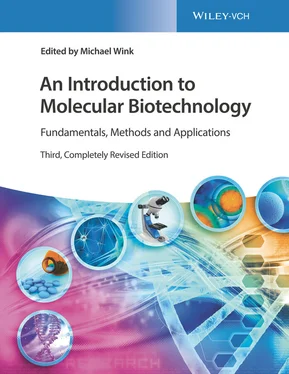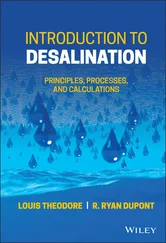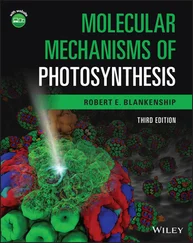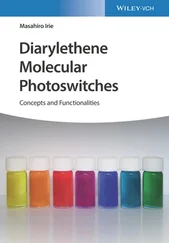8 Part IV: Biotechnology in Industry 32 Industrial Application: Biotech Industry, Markets, and Opportunities 32.1 Historical Overview and Definitions of Concepts 32.2 Areas of Industrial Application of Molecular Biotechnology 32.3 Status Quo of the Biotech Industry Worldwide 33 Patents in the Molecular Biotechnology Industry: Legal and Ethical Issues 33.1 Patent Law 33.2 Ethical and Policy Issues in Biotechnology Patents 33.3 Conclusions Acknowledgments 34 Drug Approval in the European Union and United States 34.1 Introduction 34.2 Regulation Within the European Union 34.3 Regulation in the United States 34.4 The Advent and Regulation of Biosimilars 34.5 International Regulatory Harmonization References 35 Emergence of a Biotechnology Industry Reference Further Reading 36 The 101 of Founding a Biotech Company 36.1 First Steps Toward Your Own Company 36.2 Employees: Recruitment, Remuneration, and Participation 37 Marketing 37.1 Introduction 37.2 What Types of Deals Are Possible? 37.3 What Milestone or License Fees Are Effectively Paid in a Biotech/Pharma Cooperation? 37.4 PR and IR in Biotech Companies Further Reading Websites
9 Glossary
10 Index
11 End User License Agreement
1 Chapter 1 Table 1.1 Comparison of important biochemical and molecular characteristics o... Table 1.2 Compartments of animal and plant cells and their main functions. Table 1.3 Important methodological tools of modern biology.
2 Chapter 2 Table 2.1 Molecular composition of cells. Table 2.2 Formation and function of the cellular macromolecules. Table 2.3 Important fatty acids in membrane lipids. Table 2.4 Compilation and grouping of the proteinogenic amino acids: two type... Table 2.5 Important classes of enzymes. Table 2.6 Many vitamins serve as essential coenzymes for enzyme reactions. Table 2.7 Nomenclature of DNA and RNA building blocks. Table 2.8 Enzymes that use DNA as a substrate and are used in genetic enginee...
3 Chapter 3 Table 3.1 Ion concentrations inside mammalian cells and in the extracellular ... Table 3.2 Most important hormones in humans. Table 3.3 The role of adenylyl cyclase and phospholipase C ‐β in signal ... Table 3.4 Some functions of trimeric G‐proteins. Table 3.5 Signal proteins that act via receptor tyrosine kinases. Table 3.6 Prokaryotic properties of plastids and mitochondria. Table 3.7 Classification of major animal and human pathogenic viruses. Table 3.8 Viral oncogenes that may play a part in the emergence of tumors. Table 3.9 Overview of important cell types in plants and animals.
4 Chapter 4 Table 4.1 Overview of a few of the genomes that are already sequenced and pub... Table 4.2 Relation between genome size and the number of genes of a few selec... Table 4.3 A few characteristics of the human genome. Table 4.4 Spontaneous DNA damage in a single diploid mammalian cell within 24... Table 4.5 Genetic diseases, which are associated with defective DNA repair sy... Table 4.6 Consensus sequences in eukaryotic promoter regions. Table 4.7 Protein biosynthesis in bacterial ribosomes as a target for antibio...
5 Chapter 5 Table 5.1 Examples of typical recognition sequences. Table 5.2 Occurrence of some Rab proteins.
6 Chapter 6 Table 6.1 Important groups of protists (model organisms or diseases caused by... Table 6.2 Systematic classification of the land plants. Table 6.3 Systematic classification of multicellular animals (important phyla...
7 Chapter 7 Table 7.1 Commonly used protease inhibitors in protein purification. Table 7.2 Suggestions for choosing ion exchangers when enriching proteins of ... Table 7.3 Commonly used lectins for the enrichment of glycoproteins.
8 Chapter 12Table 12.1 Features of different polymerases.
9 Chapter 15Table 15.1 Vectors, heterologous DNA uptake capacity, and host organisms.Table 15.2 Properties of enzymes for turning sticky into blunt DNA ends.Table 15.3 Commonly used cytostatic or cytotoxic selection markers.Table 15.4 Commonly used antigenic fusion components (tags).Table 15.5 Viral expression systems for mammal cells.
10 Chapter 16Table 16.1 Comparison of prokaryotic and eukaryotic host organisms for the ex...Table 16.2 Comparison of the characteristics of the two most common modificat...Table 16.3 Overview of problems for protein expression in E. coli .Table 16.4 Typical properties of some yeast expression systems.Table 16.5 Typical properties of some important mammalian cell lines.
11 Chapter 23Table 23.1 Selected databases and Internet resources.Table 23.2 Important biochemical and biophysical methods to examine protein–D...Table 23.3 Selected DNA‐ and RNA‐binding domains in the human genome and in t...
12 Chapter 25Table 25.1 Diagram of the position of common sequence motifs in members of th...Table 25.2 Target validation.Table 25.3 Screening methods that can be accomplished in high throughput.Table 25.4 Overview of preclinical and clinical drug development.
13 Chapter 26Table 26.1 Example antibodies in therapeutic use.
14 Chapter 28Table 28.1 Clinically approved monoclonal antibody products.
15 Chapter 31Table 31.1 Biocatalytic processes.Table 31.2 The 15 top‐selling recombinant proteins (million US$) in Aggarwal ...Table 31.3 Selected bioconversions.Table 31.4 Annual production volumes of different bioconversions.
16 Chapter 32Table 32.1 Selected examples of in Germany/EU in 2019 newly registered biopha...Table 32.2 Selected therapeutic antibodies by highest rank of sales (US$ mill...Table 32.3 Selected examples of therapeutic RNAs on the market or under devel...Table 32.4 Selected biotech companies with gene therapy programs.Table 32.5 Selected biotech companies with T‐cell therapy programs.
17 Chapter 34Table 34.1 The volumes comprising the rules governing medicinal products with...Table 34.2 Product categories regulated by the FDA.Table 34.3 Major biotechnology/biological‐based drug types regulated by CDER ...Table 34.4 ICH guidelines that specifically focus upon products of pharmaceut...
18 Chapter 35Table 35.1 Differences between biotech and big pharma companies.
19 Chapter 36Table 36.1 Business attitude and experience.Table 36.2 Fields of competence and necessary qualifications in a startup com...
20 Chapter 37Table 37.1 Potential revenue for the sale of developed compounds.
1 Chapter 1 Figure 1.1 Tree of life – phylogeny of life domains. Figure 1.2 Schematic structure of prokaryotic and eukaryotic cells. (a) Bact... Figure 1.3 Schematic structure of bacteriophages and viruses. (a) Bacterioph...
2 Chapter 2 Figure 2.1 Composition and structure of sugar molecules. (a) Structures of t... Figure 2.2 Structure of the cytoplasmic membrane. Schematic diagram of the l... Figure 2.3 Structures of important phospholipids. Phosphatidylcholine, phosp... Figure 2.4 Chemical structure of cerebrosides (glycolipids). (a) Galactocere... Figure 2.5 Cholesterol and related sterols. Cholesterol; β ‐sitosterol r... Figure 2.6 General structure of amino acids and peptides. Figure 2.7 Structures of proteinogenic amino acids. (Cysteine muss zu den am... Figure 2.8 Important hydrogen bonds in biomolecules. Figure 2.9 Noncovalent bonds and disulfide bridges lead to a spatial folding... Figure 2.10 Folding of peptide chains under aqueous conditions leads to a co... Figure 2.11 Importance of hydrogen bonds for the construction of α ‐heli... Figure 2.12 Size of proteins in yeast ( Saccharomyces cerevisiae ). The yeast ... Figure 2.13 Structure of Src protein with four domains. The four domains are... Figure 2.14 Occurrence of domains in different proteins. Figure 2.15 Structure of binding sites within proteins. (a) Schematic illust... Figure 2.16 Reversible activation and inactivation of enzymes and regulatory... Figure 2.17 Structure of nucleotides. (a) Structures of purine and pyrimidin... Figure 2.18 Linear structure of DNA and RNA. In nucleic acid biosynthesis, t... Figure 2.19 Structure of the DNA double helix. The spatial orientation of th... Figure 2.20 Structure of RNA molecules. (A) Yeast tRNA. The base sequence is... Figure 2.21 Structure and function of a hammerhead ribozyme.
Читать дальше



![Andrew Radford - Linguistics An Introduction [Second Edition]](/books/397851/andrew-radford-linguistics-an-introduction-second-thumb.webp)








